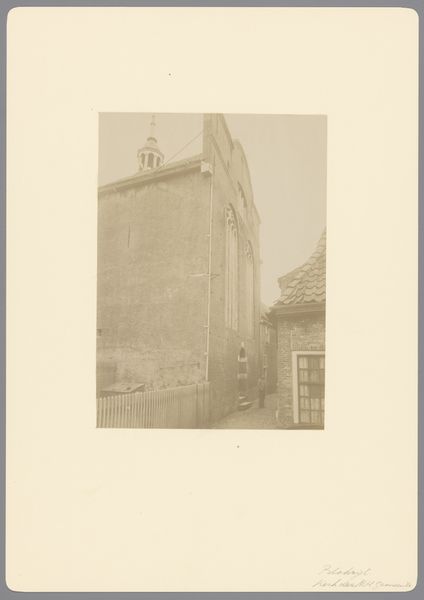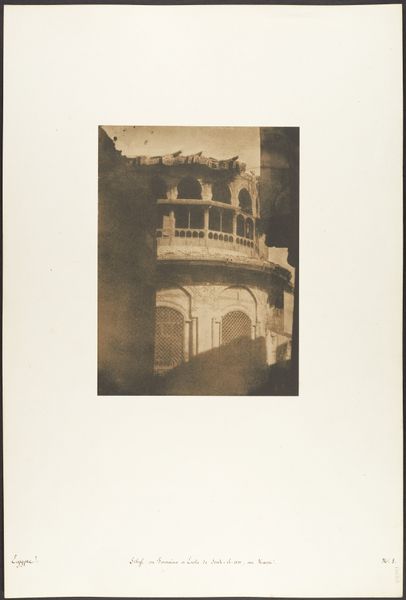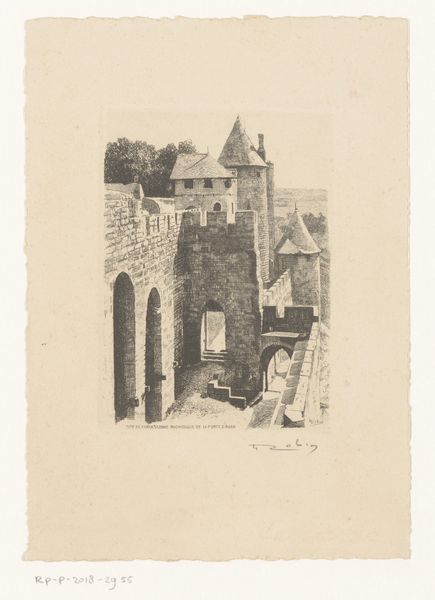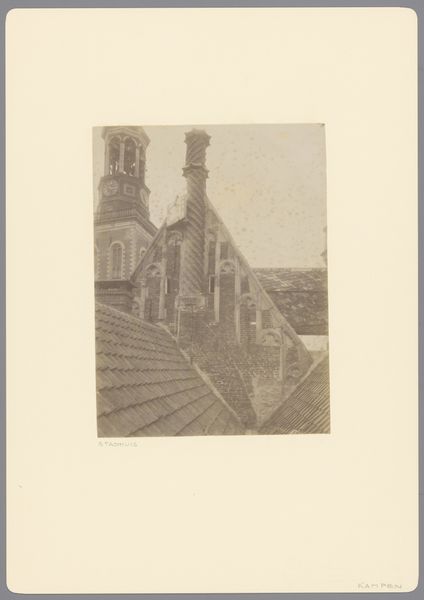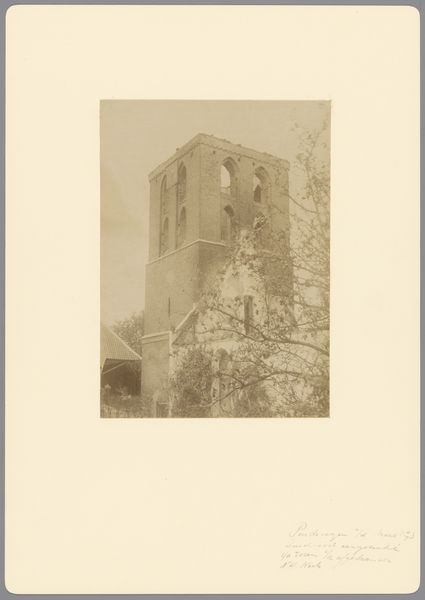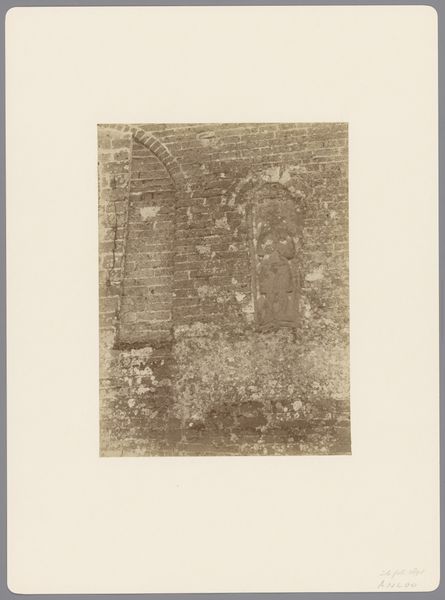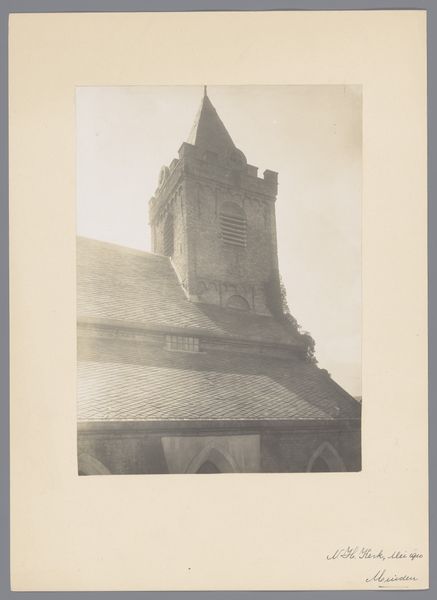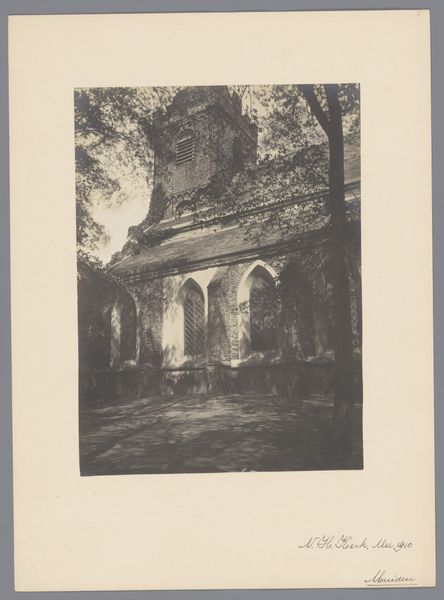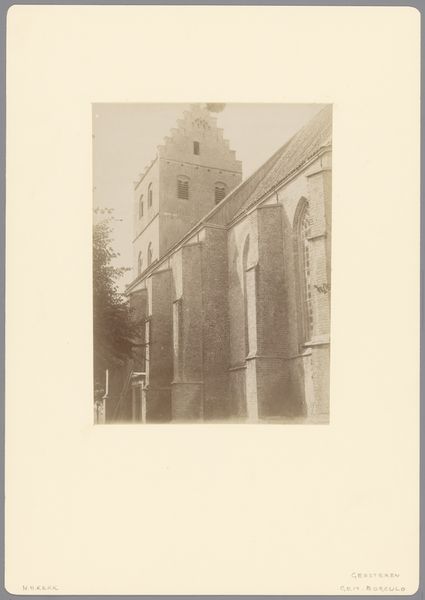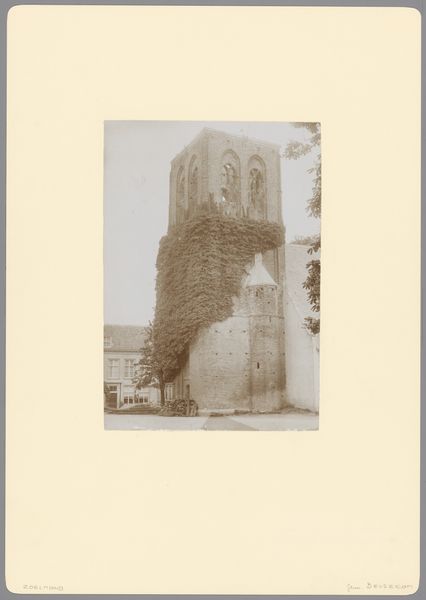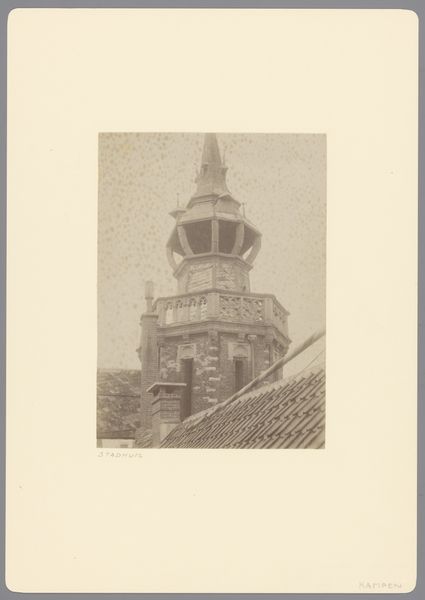
Entrée du Tombeau de Sultan Bezkouk, au Kaire 1849 - 1850
0:00
0:00
daguerreotype, photography, architecture
#
landscape
#
daguerreotype
#
photography
#
orientalism
#
islamic-art
#
architecture
Dimensions: Image: 8 3/4 × 6 5/16 in. (22.3 × 16 cm) Mount: 12 5/16 × 18 11/16 in. (31.2 × 47.5 cm)
Copyright: Public Domain
This photograph, taken by Maxime Du Camp, captures the entrance to the tomb of Sultan Bezkouk in Cairo. Note the minaret rising above the structure and the arches that outline the balcony of the building. These architectural elements are not merely functional; they are laden with historical and cultural significance. The minaret, a distinctive feature of mosque architecture, serves as a visual symbol of Islamic presence. Its form, reaching towards the heavens, echoes similar structures found across different cultures and eras, reminiscent of ancient ziggurats and obelisks. This verticality speaks to the human desire to connect with the divine, a motif recurring throughout history. Even the arches, which recur throughout the construction, echo those found in Roman aqueducts, and the Byzantine architecture, demonstrating a remarkable continuity of form adapted and re-imagined across centuries. These arches, viewed through a psychoanalytic lens, might represent a collective memory, subconscious echoes of past civilizations influencing artistic expression. Thus, Du Camp's photograph captures not just a building, but a crossroads of cultural and historical echoes. The Tomb of Sultan Bezkouk becomes a powerful symbol, engaging viewers on a deep, subconscious level.
Comments
No comments
Be the first to comment and join the conversation on the ultimate creative platform.
